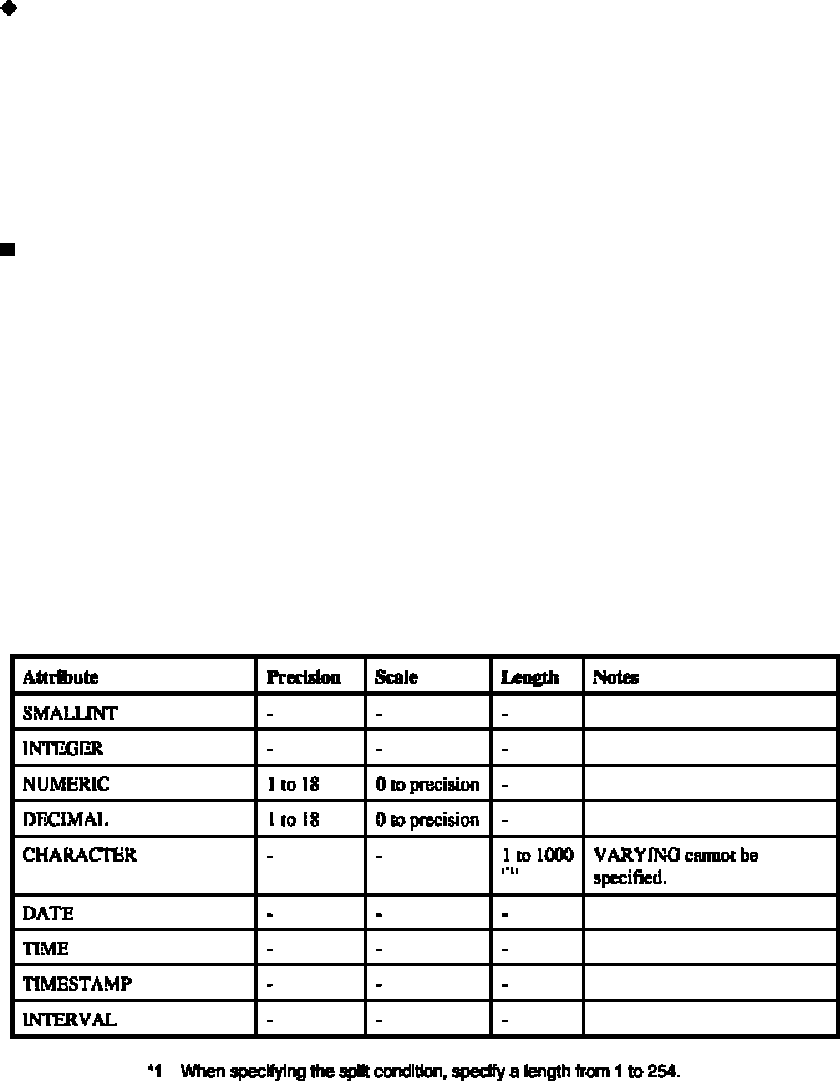
RANDOM
When RANDOM is specified, added data is stored in a random order.
For RANDOM, use CLUSTER to specify a key for determining the data storage position. If CLUSTER is omitted, the
data is stored on the basis of the arrangement of PRIMARY KEY in the table definition.
For PAGESIZE1 and PAGESIZE2, specify the page sizes of the data structure elements (PRIME and OVERFLOW for
a RANDOM structure).
A RANDOM structure allows a data storage position to be determined by specifying RULE. For more information, see
"4.1.1 RANDOM structure."
Split condition
When split table operation is to be applied, specify the split condition. The DSI definition statement specifies the actual
subdivision units. Here, specify only the condition used for splitting.
The rows stored in each subdivision unit is determined as follows. The values set in each column specified in the
column name list determine these rows. In addition, the result of assigning the following values determines the rows.
These values are the values specified by the DSI definition statement for the question marks (?) in the dummy value
list.
If a split condition is specified in a DSO definition statement and if the data structure is RANDOM, the column name
list specified in the split condition must be included in the column name list specified in CLUSTER.
Up to 64 columns can be specified in the column name list. The number of column names in the column name list
must be the same as the number of question marks (?) in each dummy value list.
Table: Data types of columns that can be specified for CLUSTER and column name list shows the data types of the
columns that can be specified for CLUSTER and the column name list.
[Table: Data types of columns that can be specified for CLUSTER and column name list]
NOT NULL must be specified for the CLUSTER columns and the column name list. The column name list specified by
the split condition is called the split key.
A sample DSO definition for the ORDER table with CUSTOMER and PRODNO of the ORDER table as a composite
split key follows.
Example 1:
Relationship between the number of column names in the column name list and the number of
question marks (?) in the dummy value lists
53


















